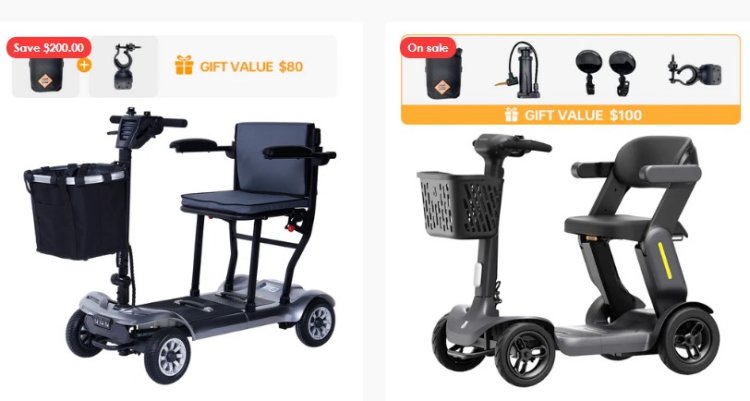How to Choose the Best Handicap Scooters for Your Needs
How to Choose the Best Handicap Scooters for Your Needs

How to Choose the Best Handicap Scooters for Your Needs
Handicap scooters are a game-changer for people with limited mobility, offering independence, convenience, and freedom. Whether you're dealing with an age-related condition, injury, or long-term disability, the right scooter can significantly improve your quality of life. But with so many models, features, and price points available in 2025, how do you choose the one that truly meets your needs?
Here’s a comprehensive guide to help you choose the best handicap scooter for your lifestyle, mobility challenges, and budget.
1. Understand Your Mobility Requirements
Start by evaluating your specific needs. Ask yourself:
-
Will you use the scooter indoors, outdoors, or both?
-
Do you need it for long distances or short daily errands?
-
Do you plan to travel often or take it in a car?
Your answers will help determine the type, size, and features you should look for in a scooter.
2. Choose Between 3-Wheel and 4-Wheel Scooters
-
3-Wheel Scooters offer a tighter turning radius, making them ideal for indoor use and tight spaces like grocery aisles or narrow hallways.
-
4-Wheel Scooters provide more stability, especially on uneven outdoor terrain, and are better suited for users who prioritize balance and comfort.
3. Consider Portability and Storage
If you plan to transport your scooter in a car or travel by plane, look for lightweight or foldable models. Many travel scooters can be disassembled into smaller parts or folded in seconds, making them convenient for on-the-go lifestyles.
For home use, make sure you have enough space to park and charge the scooter. Check dimensions and storage requirements before purchasing.
4. Check Weight Capacity and Seat Comfort
Most scooters support between 250 to 350 pounds, but heavy-duty models can accommodate up to 500 pounds. Choose a scooter that suits your body size for safe and efficient operation.
Also, look at the seat design—is it padded, adjustable, or has armrests? A comfortable seat is crucial, especially for extended use.
5. Battery Life and Speed
Battery range varies widely. Some scooters travel up to 10 miles per charge, while high-end models offer 30-50 miles. If you plan long trips or outdoor use, go for a longer battery life and faster top speeds (usually up to 8 mph or more).
For indoor or short-range use, a basic model with a 10-15 mile range should suffice.
6. Look for Safety Features
Safety should always be a top priority. Look for features like:
-
Anti-tip wheels
-
Headlights and brake lights
-
Reflectors
-
Horns
-
Rearview mirrors
-
Suspension for a smooth ride
These features are especially important for outdoor travel or evening use.
7. Think About Terrain Compatibility
If you'll be riding on sidewalks, grass, or gravel paths, choose a scooter with larger wheels and better suspension. All-terrain scooters typically come with rugged tires and higher ground clearance, offering a smoother ride over bumpy surfaces.
8. Budget and Warranty
Handicap scooters range from a few hundred to several thousand dollars. While it's tempting to go for the cheapest option, investing in a quality scooter with the right features will save you money (and frustration) in the long run.
Also, check the warranty policy and customer support. A reputable brand should offer at least a 1-year warranty and accessible tech support.
Final Thoughts
Choosing the best handicap scooter isn’t just about looks or price—it’s about finding the right match for your lifestyle. Evaluate your daily activities, environment, and physical needs before making a decision. Talk to a healthcare provider, mobility expert, or try out a few models if possible.
A well-chosen mobility scooter can empower you to live more freely, do more on your own, and enjoy life with greater ease and confidence.
What's Your Reaction?












